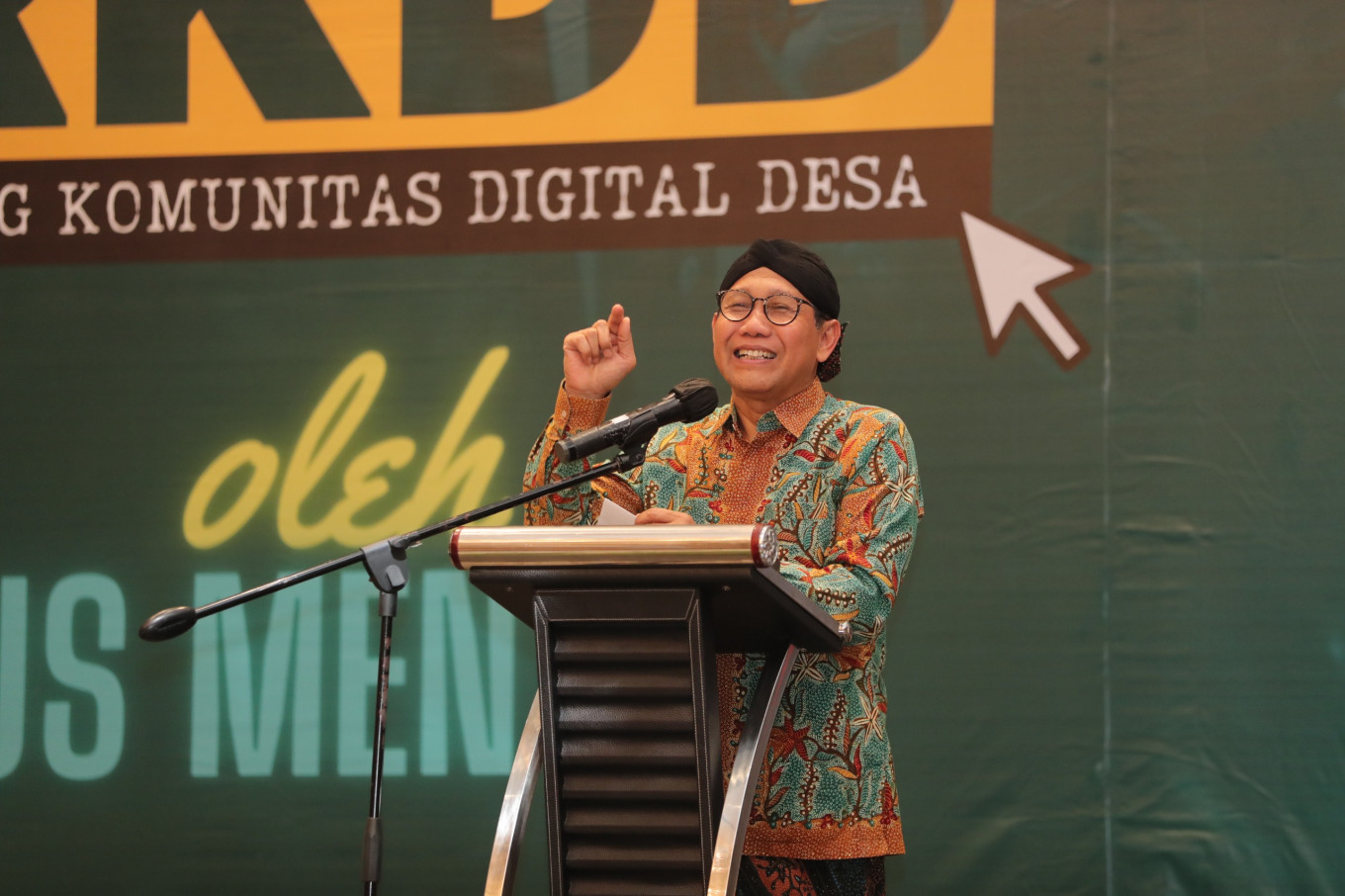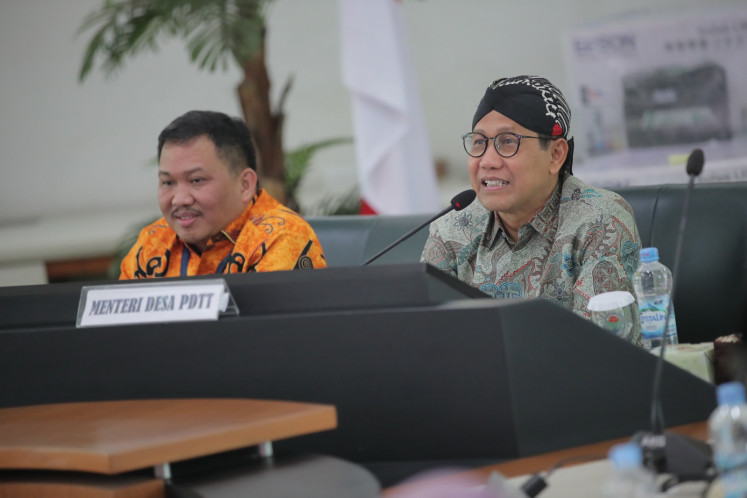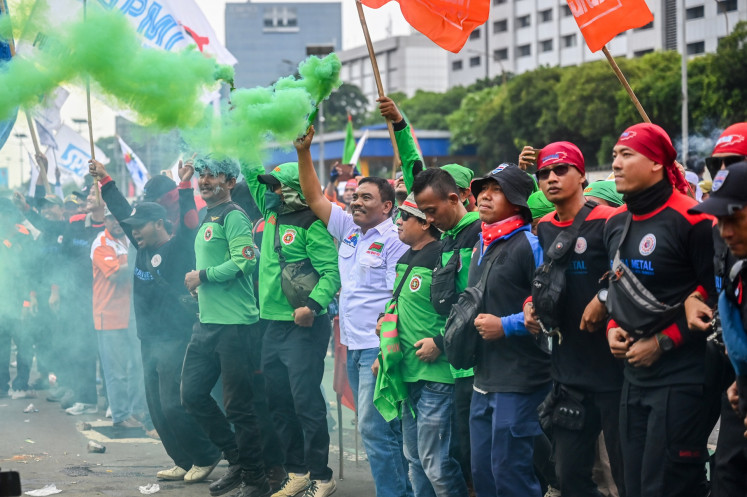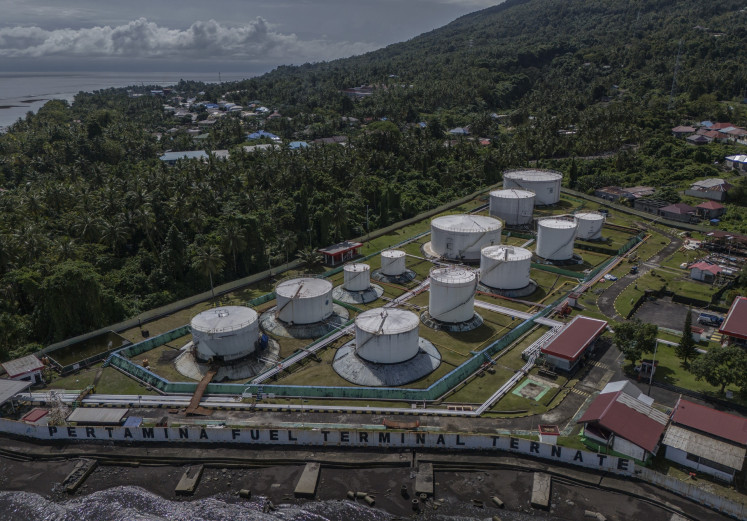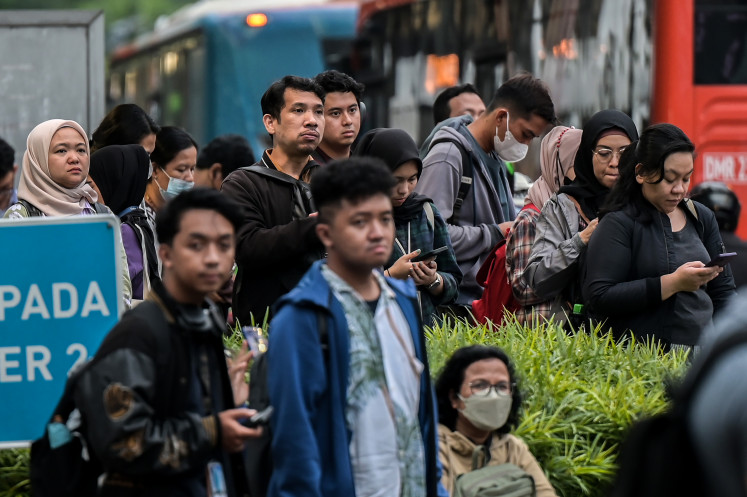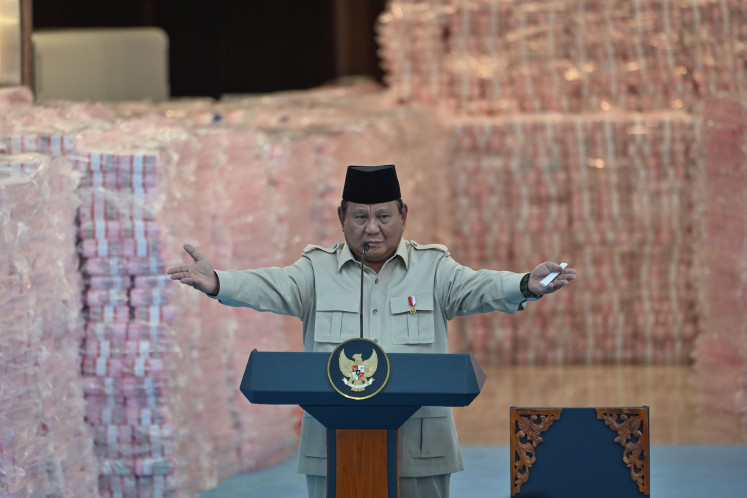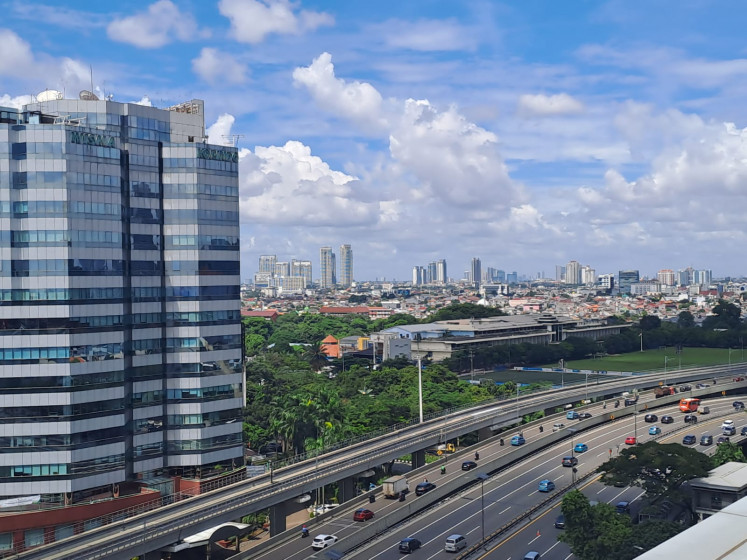Popular Reads
Top Results
Can't find what you're looking for?
View all search resultsPopular Reads
Top Results
Can't find what you're looking for?
View all search resultsVillage data should be updated weekly, minister says
Change text size
Gift Premium Articles
to Anyone
V
illages, Disadvantaged Regions and Transmigration Minister Abdul Halim Iskandar has requested that data on each village’s residents, development targets and achievements be updated weekly.
The weekly updates are to serve as a periodic reference for precise village development planning and aid in the accurate distribution of assistance, ensuring alignment with the principles of effective village governance.
"When asked about the population in your village today, you should be able to state for example, ‘In my village today, there are 1,725 men, 2,250 women, 200 widowers and 300 widows.' And that information [should be] from a week ago. That's what village data entails," Iskandar said during the Symbolic Handover of Digital Community Space Facilities (RKDD) in Jakarta on Monday.
He also highlighted how telematics infrastructure, computer facilities and the ease of developing information technology have accelerated the development of villages in Indonesia.
The Smart Village Program aims to enlighten and educate local communities by mobilizing collective community strength across diverse ethnicities, tribes and professions. This policy is geared toward promoting high-quality public service implementation by leveraging village digitization, where the goal is to achieve maximum service delivery for rural communities.
Theresia Junidar, head of the Data and Information Center at the Villages, Disadvantaged Regions and Transmigration Ministry, said village data reporting had become increasingly crucial, especially after minister Iskandar established Ministerial Regulation No. 21/2020.
“This regulation relates to village development and community empowerment, outlining the stages of village development from data collection, planning, implementation, to evaluation," she explained.
Theresia added that villages now possessed the most up-to-date participatory data.
"Village-level data is updated in the first half of each year. Hence, the information source to update village monographs is consistently available every year," she said.
"Unfortunately, many villages themselves are often unaware of the wealth of data they possess."
Once villages recognize their richness, the scope for village development widens. Moreover, rural residents can access the public data through the website https://sid.kemendesa.go.id. Specifically, village heads and secretaries have access to detailed data, while the public can view village profiles along with their potential and issues.
The ministry freely shares village characteristic data, village potential data and village-owned enterprise (BUM Desa) data, which is essential for villages and local governments to draft development work plans and Village Budgets (APB Desa). In accordance with Law No. 19/2023 on the 2024 state budget, village funds are channelled to bolster BUMD capital and other village programs based on their characteristics and potentials.
This article was published in collaboration with Ministry of Village, Development of Disadvantaged Regions and Transmigration

